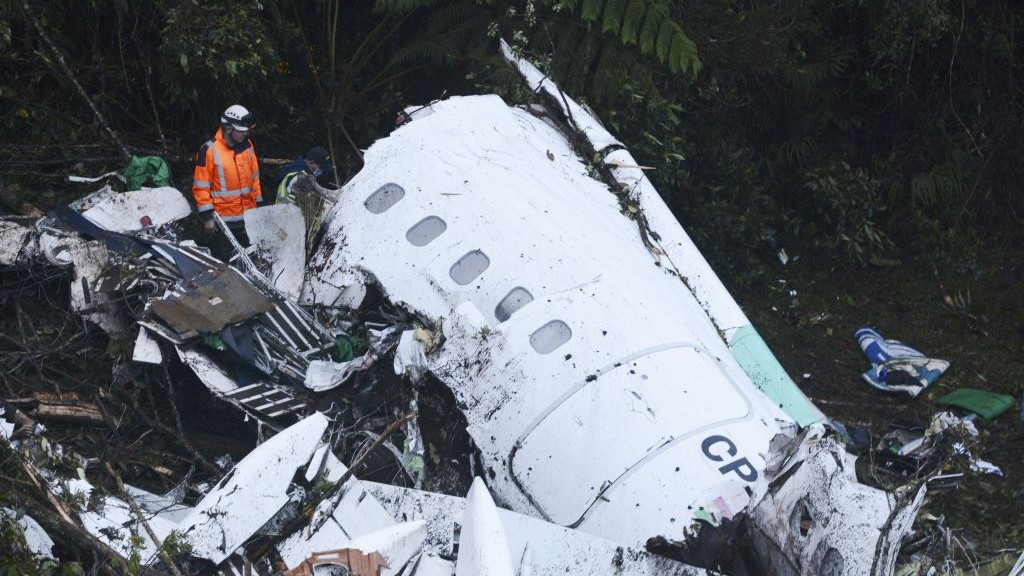History of Plane Crashes in Brazil

Brazil, with its vast geographical expanse and bustling aviation industry, has unfortunately experienced a number of significant plane crashes throughout its history. These incidents have not only resulted in tragic loss of life but have also significantly impacted the country’s aviation landscape, leading to the implementation of safety regulations and technological advancements.
Timeline of Significant Plane Crashes
This section delves into a timeline of some of the most notable plane crashes in Brazil, highlighting their impact on the aviation industry and the factors that contributed to them.
- 1973 – Varig Flight 820: This crash, involving a Boeing 707-320C, occurred near Paris, France, killing all 123 people on board. The investigation revealed that the crash was caused by a combination of factors, including pilot error, mechanical failure, and weather conditions. This incident prompted a significant overhaul of safety regulations in Brazil, including the establishment of the National Civil Aviation Agency (ANAC) in 1995.
- 1982 – TAM Airlines Flight 352: This crash, involving a Boeing 737-200, occurred in São Paulo, Brazil, killing all 93 people on board. The investigation concluded that the crash was caused by a combination of factors, including pilot error and mechanical failure. This incident led to a review of pilot training programs and the implementation of new safety protocols for aircraft maintenance.
- 1989 – Transbrasil Flight 402: This crash, involving a Boeing 727-200, occurred in São Paulo, Brazil, killing all 137 people on board. The investigation determined that the crash was caused by a combination of factors, including pilot error, mechanical failure, and weather conditions. This incident prompted the implementation of new safety regulations for aircraft maintenance and the introduction of advanced flight simulators for pilot training.
- 2006 – Gol Transportes Aéreos Flight 1907: This mid-air collision, involving a Boeing 737-800 and an Embraer Legacy 600, occurred near the Amazon rainforest, killing all 154 people on board the Gol flight. The investigation concluded that the crash was caused by a combination of factors, including pilot error and inadequate communication protocols. This incident led to the implementation of new air traffic control systems and regulations for aircraft separation.
- 2007 – TAM Airlines Flight 3054: This crash, involving an Airbus A320, occurred at São Paulo–Congonhas Airport, killing all 189 people on board. The investigation determined that the crash was caused by a combination of factors, including pilot error, runway conditions, and weather conditions. This incident led to the implementation of new safety regulations for airport operations and the modernization of Congonhas Airport.
Common Factors Contributing to Plane Crashes
While each plane crash in Brazil has its unique set of contributing factors, certain common themes emerge, highlighting areas that require ongoing attention and improvement within the aviation industry.
- Pilot Error: Pilot error is a significant contributing factor to many plane crashes. This can include mistakes in judgment, failure to follow procedures, or inadequate training. The aviation industry is constantly striving to improve pilot training and develop advanced technologies to assist pilots in making critical decisions.
- Mechanical Failure: Mechanical failure can also contribute to plane crashes. This can include problems with the aircraft’s engines, control systems, or other critical components. The aviation industry is constantly working to improve aircraft design and maintenance practices to minimize the risk of mechanical failure.
- Weather Conditions: Weather conditions can also play a role in plane crashes. This can include severe storms, turbulence, or low visibility. The aviation industry is constantly developing new technologies and procedures to help pilots navigate challenging weather conditions safely.
- Air Traffic Control: Air traffic control errors can also contribute to plane crashes. This can include mistakes in communication, coordination, or the management of aircraft separation. The aviation industry is constantly working to improve air traffic control systems and procedures to minimize the risk of errors.
Types of Plane Crashes in Brazil: Brazil Plane Crash Type

Brazil plane crash type – Understanding the causes of plane crashes in Brazil is crucial for improving aviation safety and preventing future tragedies. By categorizing crashes based on their causes, we can identify trends, implement preventative measures, and learn from past mistakes.
Pilot Error
Pilot error is a significant contributor to plane crashes worldwide, and Brazil is no exception. It encompasses a wide range of factors, including:
- Loss of situational awareness: This occurs when pilots fail to recognize or respond appropriately to changing circumstances, such as weather conditions or mechanical issues.
- Misjudgment: Pilots may misjudge distances, altitudes, or speeds, leading to collisions or other accidents.
- Fatigue: Fatigue can impair a pilot’s judgment and reaction time, increasing the risk of errors.
- Lack of training or experience: Insufficient training or experience can make pilots more susceptible to mistakes.
Mechanical Failure
Mechanical failures, such as engine malfunctions, structural problems, or faulty instruments, can also lead to plane crashes. These failures can occur due to manufacturing defects, inadequate maintenance, or wear and tear.
- Engine failure: Engine malfunctions can result in loss of power, leading to a crash.
- Structural failure: Cracks or other structural defects can compromise the integrity of the aircraft, causing it to break apart in flight.
- System failure: Faulty instruments or other systems can provide incorrect information to pilots, leading to errors in judgment.
Weather Conditions, Brazil plane crash type
Brazil’s diverse geography and climate create challenging conditions for aviation. Severe weather events, such as thunderstorms, heavy rain, and wind shear, can significantly increase the risk of crashes.
- Thunderstorms: Thunderstorms can produce strong updrafts and downdrafts, making it difficult for pilots to control the aircraft.
- Heavy rain: Heavy rain can reduce visibility and impair the performance of aircraft systems.
- Wind shear: Wind shear is a sudden change in wind speed or direction, which can cause aircraft to lose altitude or control.
Terrorism
While terrorism is a less common cause of plane crashes in Brazil compared to other countries, it remains a potential threat. Terrorist attacks can target aircraft in flight or on the ground, resulting in significant loss of life and damage.
- Hijacking: Terrorists may hijack an aircraft and use it as a weapon, crashing it into a target or using it for other purposes.
- Bombing: Terrorists may plant explosives on board an aircraft, causing it to explode in flight or on the ground.
Brazil has sadly witnessed its share of plane crashes, often involving regional airlines and older aircraft. However, the voepass plane , with its focus on safety and modern technology, aims to disrupt this trend, offering a more reliable and secure option for air travel in the region.
While the past may be riddled with tragedies, the future holds promise for safer skies, hopefully diminishing the occurrence of such devastating events.
The tragic history of Brazil plane crashes is marked by a variety of contributing factors, from weather conditions to human error. Understanding the specific circumstances of each incident is crucial to preventing future tragedies, as seen in the recent plane crash brazil today , which highlights the importance of continued investigation and analysis to determine the cause and ensure the safety of future flights.
By carefully examining the various types of Brazil plane crashes, we can learn from past mistakes and work towards a safer future for air travel in the region.
